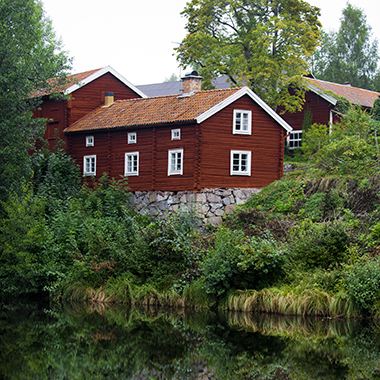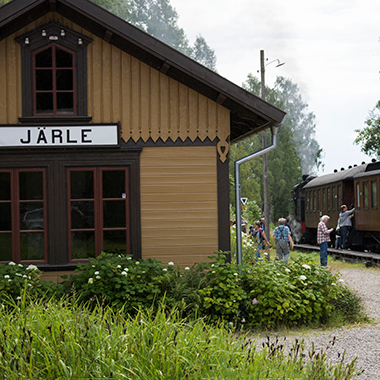- Startsida
- / Welcome to Nora!
- / See and do
- / Attractions
- / Historic sites
Historic sites
There are historic sites hidden around Nora that testify to what life was like in Bergslagen’s heyday. Discover mining parks, ruins and beautiful estates.
Jerle stad
In the 1640s, Carl Bonde dreamed of a canal to transport iron ore from Järle to Mälaren. In Järle he wanted to build a new town and in October 1642 town privileges were granted to Järla Stadh. But nothing came of the plans. The town privileges were forgotten in the municipal reforms, which made Järle Sweden’s smallest – and perhaps most forgotten – town. The iron industry still continued all the way into the 1900s, but today only ruins and slagheaps remain. Järle mill and mill dam are preserved in original condition. Alongside Järle river is a hiking trail of 2.5 km. Do not miss a visit to Svalbo ceramics and a nice break at Svalbo Café!
Klacka-Lerbergs Gruvpark (Mining Park)
In Klacka-Lerbergs mining park are the remains of a long-time mining operation including mine pits, test pits, ore pits and scrap heaps. The mining park also offers a beautiful view over Fåsjön lake.
Skrekarhyttans Ruin
At the ruin in Skrekarhyttan are stone walls, blast furnace foundations, trenches from a waterwheel and a lot more that belonged to Skrikarhyttan. Adjacent to the smeltery ruins is a lovely circular trail of 1.5 km. There is also a picnic spot and BBQ.
Greksåsars smeltery ruin
In Greksåsar you can still see today the ruins of the blast furnace and coalhouse at the old smeltery site. In summer you can discover the area on a village walk, a walk of circa 600 m with information boards telling you about the village, superstitions, tales and history.
The Frövifors Papermill Museum
Frövifors is a paper mill outside Frövi which was an iron works until the end of the 1800s. Then the iron gave way to the much more profitable paper. The Museum offers industrial history with a focus on paper – exhibitions, experiences and a handmade paper workshop which is usually very popular with children. There is also a fantastic museum shop and café.
Järle Station
Järle station is Sweden’s oldest railway station, built in 1854, two years before the inauguration of the railroad between Nora and Ervalla. Today there is a café and sales of arts and crafts in summer. Veterantåg (The Vintage Train) leaves for Järle from Nora station according to the timetable.
The ruins in Hammarby
The rapids in Hammarby have been dammed since the 1500s, and the works that emerged operated right up till 1923. Today distinct ruins of the works still exist, steelworks and ruins of the smeltery, house foundations and the slagheap. At one time Hammarby works was an important part of the industry that financed Swedish industrial power. The iron ore came from the nearby mines, but several smaller mines around Hammarby testify to lesser mining in the area. One of Sweden’s first bar iron hammers, a water-powered forging hammer, was also built here.



